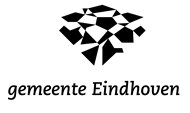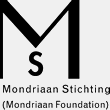Aug 10th, 2007 by Kerstin Niemann | 1 Comment »
Right after our stop in Chicago I took off to go further north by myself whereas Charles returned to the Netherlands. Minnesota, the land of 10.000 lakes and 1 000.000 mosquitoes, was chosen to be the last planned stop on our research tour for the Heartland project this summer. On Tuesday the 7th I took time to investigate the Twin cities, Minneapolis and St. Paul. According to Doryn Chong, curator at the Walker Art Center, Minnesota has one of the best funding programs for visual artists — needless to say that you find a vibrant music as well as art scene here. Since time was short I was only able to get to visit a few sites, but hope to come back for the 2nd research trip to explore more of the Minnesotan spirit. Together with my host sister Wanda Monroe I visited the Soap Factory at first. Focusing on viewer interaction the Soap Factory is dedicated to the production, presentation and promotion of emerging contemporary practices across the visual arts. As a non-profit venue Soap Factory supports artists and their work not only by providing exhibition and studio space on an unprecedented scale but also by providing skilled staff to aid artists in realizing their works. Debra deNoyelles (development director) and Heidi Prenevost (program administrator) where so nice to give us an introduction of what Soap Factory is all about. Not only focusing on local art production and networking but also concentrated to get involved with art practice from other states/countries (in specific New York and Europe) this institution is quite engaged in developing works with artists or support curators and their exhibition concepts.

SOAP FACTORY, Minneapolis “Faggot. The Movie” installation view

SOAP FACTORY, Minneapolis “Faggot. The Movie” installation view
with Heidi Prenevost, program administrator
Continue Reading »
Posted in All Posts, Research Travels | 1 Comment »
Aug 6th, 2007 by Charles Esche | 6 Comments »
I am a bit behind on the blog, for which apologies and a little drama last night in Chicago held us up yet further…of which more later. Partly it has been that both Memphis and Chicago have real art communities with whom we can talk to late into the night.
Going back to Memphis for a brief moment. It was striking to see the proximity of Dr ML King’s assassination site and the monument to Nathaniel Forrester who founded the Klu Klux Klan. It says something very clearly about the profundity of the still existing racial divide and the way that moral ambiguity during the Civil War and Civil Rights still hangs around this part (at least) of the USA. What is interesting to understand is that there never was a kind of “Vergangenheitsbewältigung” or coming to terms with the past, after either of these two great revolutionary moments in the last 15o years of US history. Instead, the losers licked their wounds, declared themselves victims of the victors but then got on with preserving as much as possible of the old system. Imagine that state of affairs in post-war Europe and maybe the complexity of this juxtaposition of King and Forrester becomes clearer. It will take time for us to think through how accurate this analogy is, and I am already sure that it fails at certain points. but it is a important antidote to the rhetoric of unhindered (capitalist) progress that I think still captures the foreigners’ imagination of the USA.
In all events, the cultural legacy of the two “civils” (war and rights) remain profound. It means that the civil society and the public sphere cannot really escape a racial reading. The question “who’s public sphere” is answered in terms of race and often religious morality rather than class or economic condition. Certainly, voting patterns in most of the cities we have visited follow strict racial lines and thus mostly elect local African-American representatives. Their ability to count on the racial vote means the politicians themselves are even more subject to the corruption of office than usual - because all critique risks the accusation of racism.
The fight for Civil Rights has made such an accusation deadly (rightly so if true, but not if it blocks political criticality). Thus in memphis, everyone we spoke to seemed to acknowledge the deep corruption of the mayor yet none were certain he would be voted out of office. This cyncism for the democratic process - which has its equivalents all over the world - seems to me much more dangerous than we would like to admit. If it becomes accepted we enter a period of dark political stagnation, like the Brezhnev era in the USSR.
Anyway, the slightly melancholic tone of this entry might be accounted for in the fact that Kerstin and I were robbed at gunpoint last night. Sounds much more dramatic than it was, but looking down the barrel of a gun - even held by a young kid - is a bit disturbing, though probably to be expected.
..It is funny but my first reaction afterwards was to be grateful for social democracy. What happened seemed to me a kind of informal tax system which we have formalised in northwestern europe in state taxation…and I have to say I prefer a letter from the Dutch taxman to the US method of exacting social welfare…
More later - I fly back today….but we will keep this blog going for the future and invite our new collaborator, Stephanie Smith, to join us soon…
Posted in All Posts, Research Travels | 6 Comments »
Aug 3rd, 2007 by Otto Berchem | 3 Comments »

Nearing the end of the road.

This is Holland is not full.

The parable of the fig tree and some grain elevators to add more grist for Charles theory mill.
Continue Reading »
Posted in All Posts, Artists In Residence, Research Travels | 3 Comments »
Aug 3rd, 2007 by Otto Berchem | No Comments »

Juan William Chavez, artist and director of Boots Contemporary Art Space.

Brandon Anschultz, Bryan Reckamp, Matt Strauss, amongst others, at Boots.

Paul Ha, Director of the Contemporary Art Museum St. Louis.
Posted in All Posts, Artists In Residence, Research Travels | No Comments »








